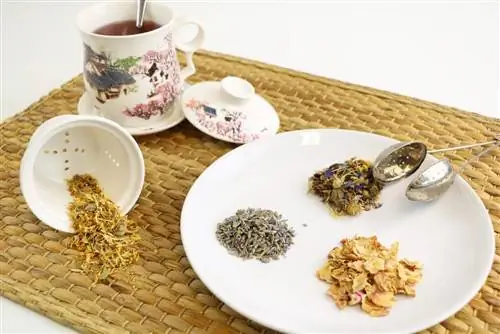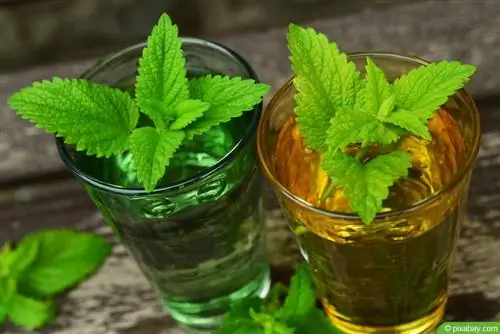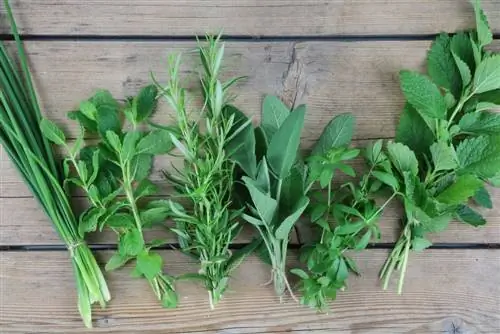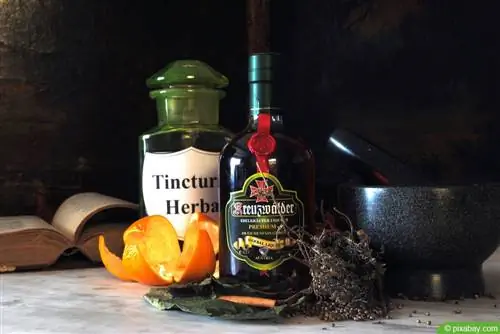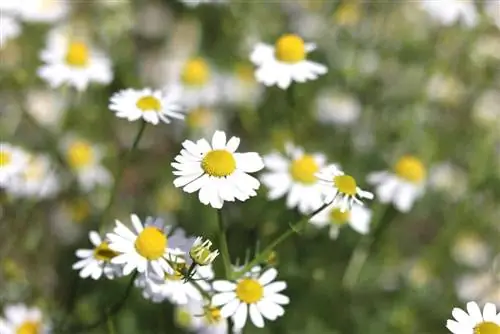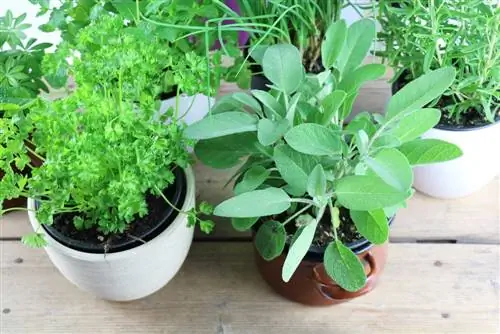- Author admin [email protected].
- Public 2023-12-17 03:39.
- Last modified 2025-01-24 12:45.
Herbal teas are ideal drinks for every day and consist only of natural ingredients. This soothing hot drink is easy to make yourself and can be sweetened to suit your taste. Regular consumption of herbal teas has a positive effect on he alth and well-being. Many medicinal herbs grow wild and can be easily collected, after which they are dried before consumption.
Collecting medicinal herbs
So that the shoots are full of strength and not too wet, rainy days should be avoided when collecting. Then the herbs are dry and mold can be prevented. The location of the medicinal plants is very important; car-free places are ideal to avoid contamination. In addition, dogs should not move in this area and leave their business behind. The plants should not show any brown spots or signs of wilting, as these reduce the effect and taste of the herbal tea. Due to the high risk of confusion with poisonous plants, the medicinal herbs should be well known. Prior information is therefore absolutely necessary.
- Basically collect during sunny weather conditions
- Looking for herbs between late morning and early afternoon
- Pfer remote collection points
- Collect only he althy plants
- Inform which plant parts can be used
- Look for the right period, pay attention to flowering times
Popular plants for herbal tea
There are many plants and herbs from which you can brew a he althy tea.
Birch

The leaves of the birch flush harmful impurities from the body and, above all, cleanse the kidneys. These provide soothing relief for persistent kidney problems and can even dissolve stubborn kidney stones if consumed regularly over a longer period of time. In addition, birch leaves are very beneficial for skin diseases; constant consumption ensures a more beautiful complexion. In addition, these medicinal herbs improve overall well-being. Harvesting should take place in spring when the leaves are still very young. It is advisable to proceed carefully so as not to cause unnecessary damage to the tree.
- Leaves contain tannins, flavonoids and lots of vitamin C
- Also compounds of salicylic acid
- Slightly bitter taste
- Carefully remove any young and somewhat sticky leaves from the branches
- Afterwards dry sufficiently
Stinging Nettle
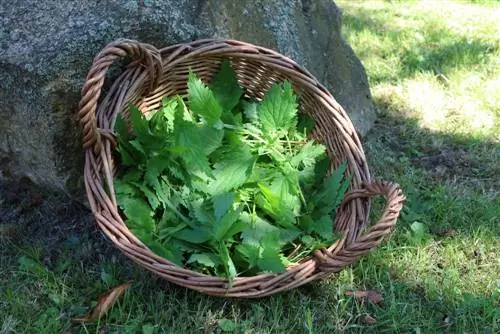
A tea made from nettles has strong detoxifying properties and drains water in a gentle way. The leaves required for this herbal tea should preferably be collected in spring; the plant grows wild almost everywhere. Nettle tea impresses with its intense herbaceous taste and a slightly sweet note, which is why it can be drunk without any additional sugar. The medicinal herbs can be mixed well with other detoxifying ingredients, making a suitable drink for periods of fasting.
- Collect the young plants from April to June
- Be sure to wear gloves when picking
- Then let it dry out completely
- Stimulates the removal of toxins in the body
- High mineral content
- Mix equal parts with birch and dandelion
- Is good for fasting cures in spring and autumn
elderflower
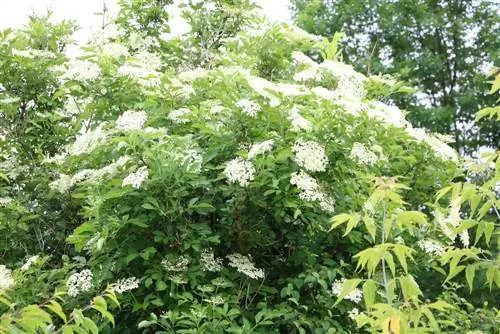
Elderberry has proven itself to be effective against colds. The flowers are white with a touch of pink. The healing effects are very diverse, but this herbal tea should not be overdosed, otherwise nausea can occur.
- Collect elderflowers between May and July
- Afterwards allow to dry sufficiently
- Stimulate metabolism and circulation
- Elevates mood and reduces fever
- Mild floral taste
St. John's Wort
St. John's wort blooms between June and August and grows wherever the soil is particularly dry and stony. The medicinal herb should ideally be collected when no flowers are growing on the stems. Otherwise, St. John's wort can be used entirely for tea. Its properties include a mood-enhancing effect, which is why the herb is used for nervousness. If consumed regularly, you can also get sleep problems under control.
- Cut as close to the ground as possible
- Intensely bitter taste
- Helps with depressive mood swings
- Relieves persistent states of unrest
Chamomile

Chamomile is probably the best-known plant among medicinal herbs and fits into many home-made tea mixtures. The plant blooms from spring to late autumn, is widespread and easy to recognize by its flowers and characteristic scent. In medicine, chamomile is used to disinfect wounds and is used for complaints in the gastrointestinal tract and for inner restlessness.
- Versatile and popular medicinal herb
- Has both an anti-inflammatory and antibacterial effect
- Slightly bitter taste with an intense aroma
Dandelions
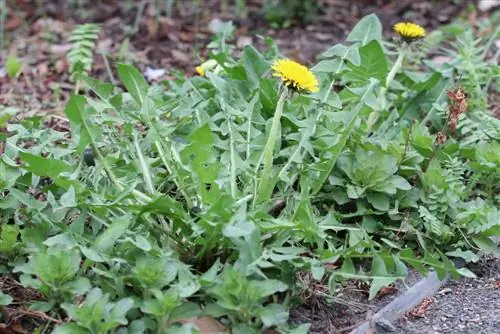
The dandelion also grows wild in the local forests and meadows and is therefore very easy to find. The plant is easy to recognize due to its bright yellow flowers and serrated leaves. Dandelion also has detoxifying properties and stimulates organ activity, especially the liver. This medicinal herb also has an energy-stimulating effect, which is why it is very suitable as a substitute for coffee. In addition, this provides healing relief from osteoarthritis, joint problems and various chronic inflammations in the body.
- The leaves and/or roots are needed for the tea
- Dry before eating
- Bitter taste, pay attention to correct dosage
Melissa
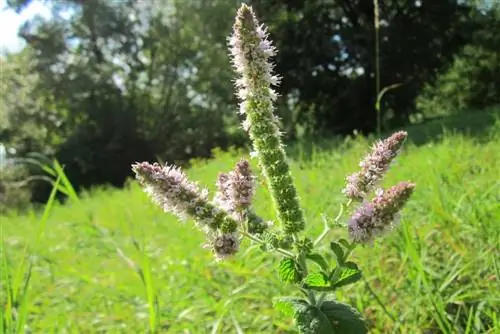
The leaves of lemon balm taste particularly good shortly before flowering; the medicinal herb is a delicious ingredient for any herbal tea mixture. The ideal time to collect is before June; the flowering that occurs afterwards gives the aroma a strong bitter note. Lemon balm is also known for its calming effects.
- Collecting leaves in spring
- Very fresh taste, mix of mint and lemon
- Sustainably promotes appetite
- Relieves unpleasant flatulence and cramps
Mint
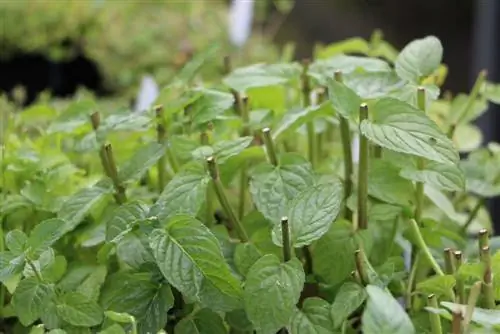
Mint is another classic and indispensable in the production of herbal teas. The plant's flowering period lasts from June to August; the leaves are particularly aromatic in the weeks and months before this flowering phase. Contrary to popular belief, the leaves can still be consumed without any problems even during the flowering period. The healing properties of this medicinal herb are based on the essential oils it contains.
- Pick and dry the leaves, do not use the flowers
- Fresh mint flavor
- Cooling and antibacterial effect
- Helps against respiratory problems and flatulence
Marigold
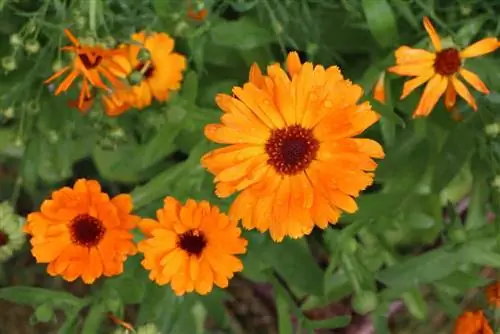
The marigold is also known as calendula and produces distinctive flowers in yellow to orange tones. This also gives the herbal tea a nice visual touch. Marigolds bloom in home gardens and wild meadows between July and October. The flowers are closed at night, so they should only be collected later in the morning.
- Helps with skin diseases and liver diseases
- Soothes the gastrointestinal tract
- Promotes wound healing
- Only a very weak flavor
- Is therefore suitable for mixing with strongly aromatic herbs
Sage
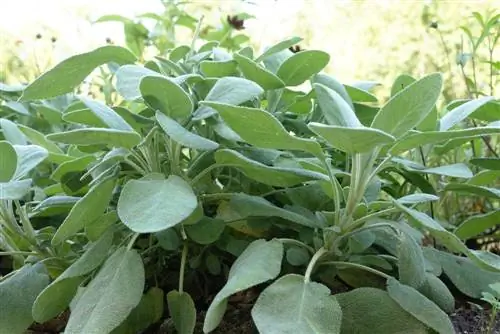
A tea made from fresh sage leaves helps with severe nausea. The plant can be recognized by its velvety leaf surface and long leaf shapes. It also gives off a very special scent. The medicinal herb should be harvested between May and the end of August, then it has a very intense aroma. For many people, the strong taste takes a lot of getting used to at first and is sometimes even perceived as unpleasant. But the healing properties make up for it.
- Harvest leaves during the growing season
- Antibacterial and diaphoretic effect
- Strong herbaceous and bitter flavor
Yarrow

Yarrow is also known as a wound healing herb and grows almost everywhere. The plant is in peak season in July and produces many small, white flowers. Yarrow is very robust, with resilient properties that contrast with the delicate flowers. Women in particular swear by its healing properties for menstrual and menopausal problems.
- Antispasmodic and strengthening effect
- Stimulates sustained wound healing
- Has a balancing effect on disorders of the female reproductive organs
- Medicinal herb is rich in tannins, blue oil, inulin, potassium and sulfur
- Mild and floral taste that is relatively neutral
Thyme
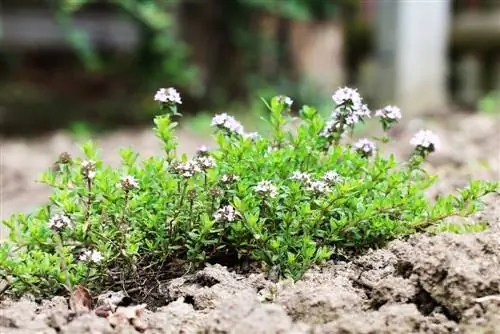
Thyme is mainly used for colds as it helps with coughs and sore throats. The medicinal plant strengthens the respiratory tract when consumed regularly. However, thyme is very sensitive to frost, which is why it is rarely found wild in nature in these latitudes. However, this plant can be planted in a protected location in the garden; it prefers warm site conditions with sandy soil qualities.
- Evergreen plant
- Leaves can be harvested all year round
- Disinfectant and antispasmodic effect
- Strong and refreshing flavor
Mix herbal tea
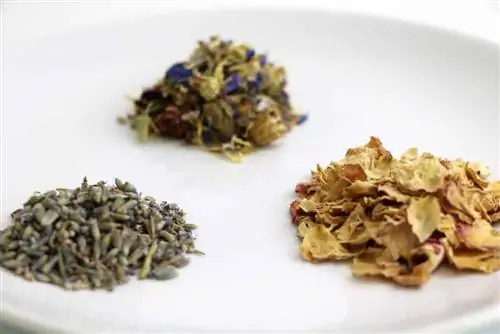
The herbs can be combined into a herbal tea as desired and depending on their respective effects. The mixing ratio can be adjusted to your own taste preferences, as well as he alth problems.
- Always dry herbs sufficiently before use
- Mixtures for detoxification, falling asleep and calming possible
- Pour 1 liter of boiling water over two to four teaspoons of the herbs
- Cover and let steep for about 10 minutes

